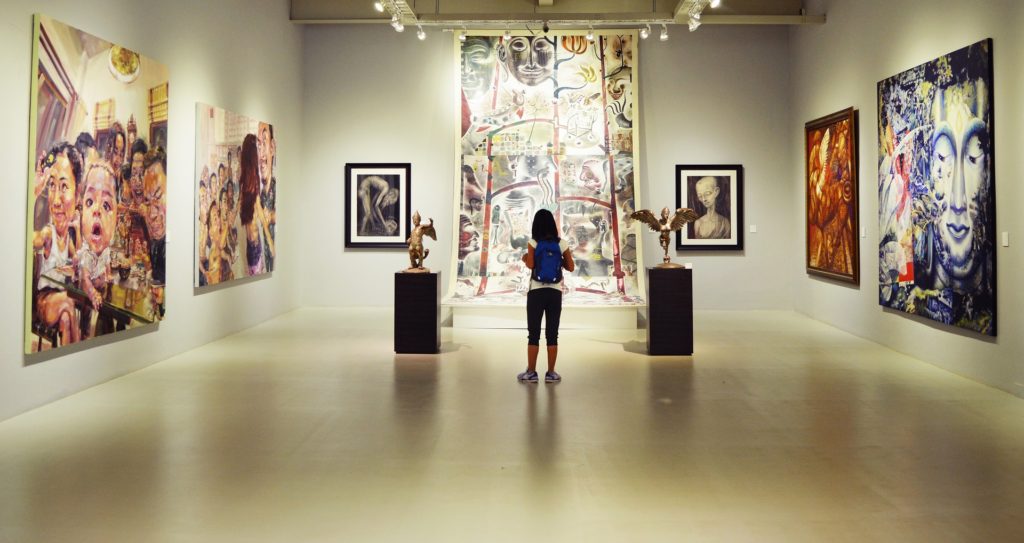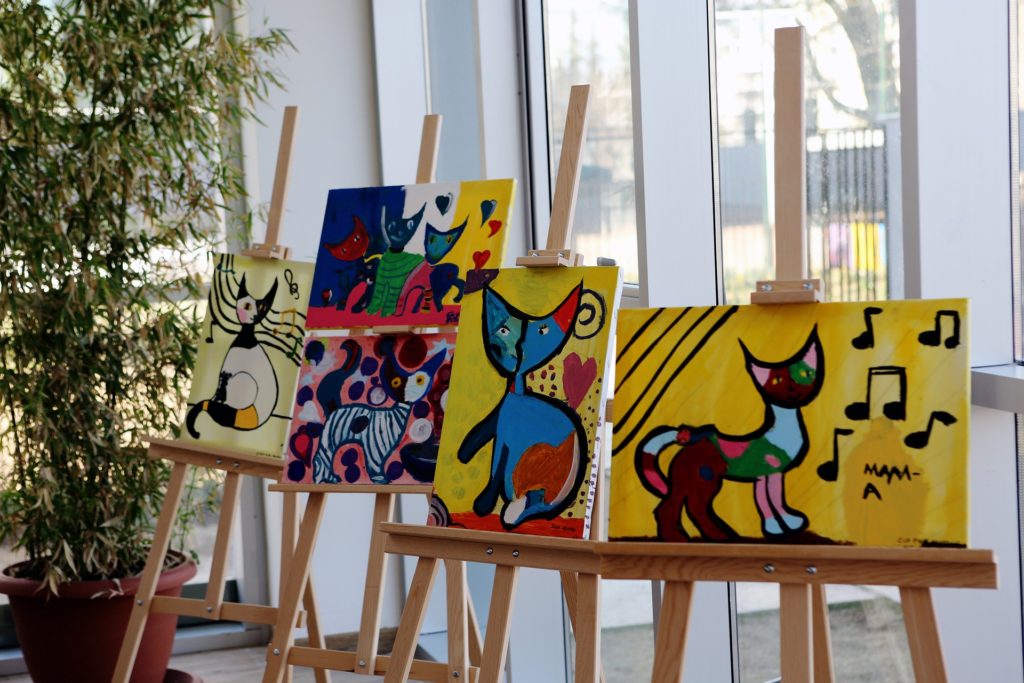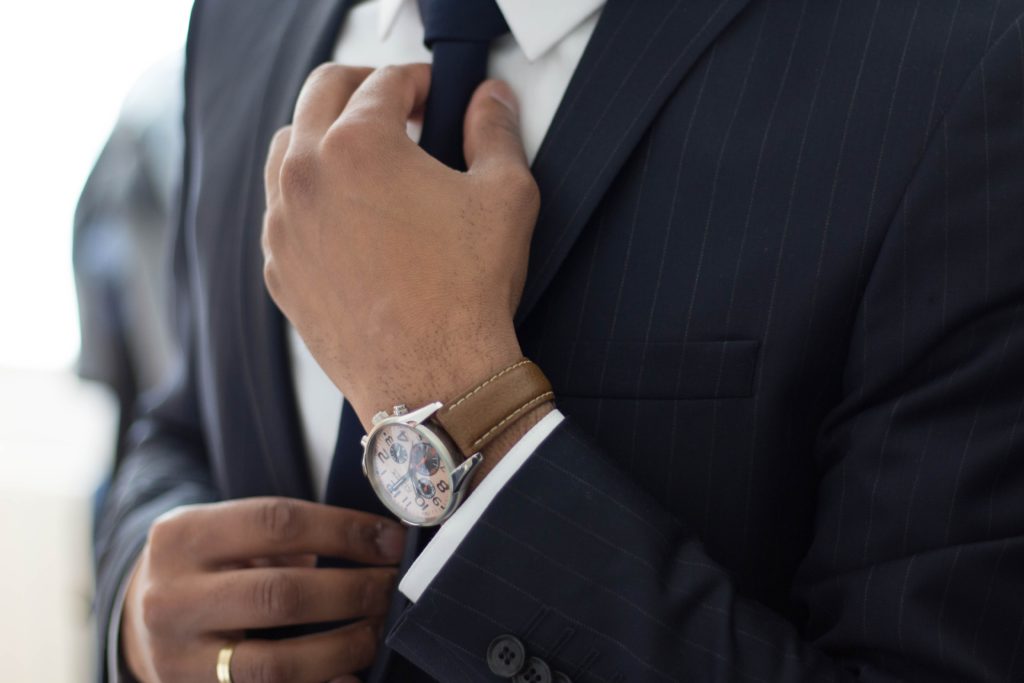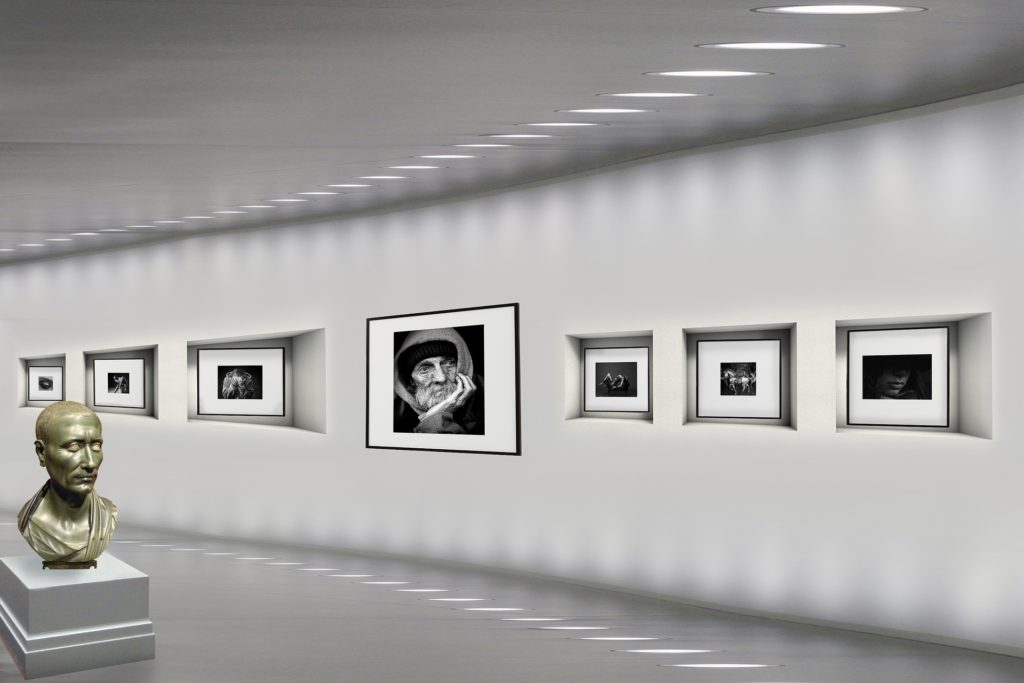Congratulations! You’re finally on your way towards your first-ever art show.
There might be millions of things running into your head right now and your emotions might be at an all-time high, but you need to pull yourself together smoothly.
In times like this, it’s very easy to get distracted and forget about some crucial details that could simply be avoided.
Hence, you need to make an exhibition checklist of everything that you have to do and prepare to ensure that your first art show will be a success.
And of course, learn how to assess your situation, avoid procrastination, and stick with your plans. .
The least that you want to happen is to cram in finishing some artworks a week or a few days before the show.
With careful planning and preparation, you can efficiently set your art exhibit to success.
And after the show, you may save yourself from resorting to the commonly used expression that is, “There’s always a first time.”
How to Prepare for an Art Exhibition
Joining an art show is certainly one of the ways for you to widen your reach as an artist and to connect with your existing client base.
It’s a completely different experience from what most artists are accustomed to in their virtual and indoor worlds.
Being able to step out of your comfort zone and prepare yourself for your first art exhibit is a feat that deserves a pat on the back. But that’s just one side of the coin.
The other side is where all the hard work thrives, which includes the steps that you have to go through on your way to your first art show.

Know the Audience
Before signing-up for any type of art exhibit, you must know the audience that this event is catering to.
It’s also the same with checking the credibility of the organizer, and their capacity to drive in potential buyers and not just lurkers.
This is crucial unless of course, if you are joining a non-commercial art show, where the focus is really just in showcasing your talent.
There are also art shows that are structured together with other events or attractions like a trade fair, cultural presentation, fashion show, or a mini-concert.
Ask yourself if this type of event is something that you’d like to join or is it something that your target market might be interested at.
Consider the Time-frame
You might be so eager to finally join an art show for the first time, but are you ready? Is there enough time for you to produce artworks that don’t look rushed?
Or if you have enough collection to display even if the show is next week, you still need to consider if the artworks speak true to your voice.
You want to make sure that your finished artworks fall in one theme because if not, they might look disconnected and all over the place.
Moreover, even if you think you already have enough pieces, you should always have a margin so you can make the most of the opportunity and the space that is given to you for your artworks.
I mean what if a number of your paintings will be sold even before the show? Would you still have enough paintings that can be available for grabs during the exhibit?
Determine the Type of Your Art Exhibition
Are you planning to organize a solo exhibit or are you going to join an art show that also features other new and seasoned artists?
If you choose the latter, you must ask for all the details of the show from the organizer.
You certainly don’t want to be surprised on the day or a few days before the event that there are things that they won’t provide such as the tent, the refreshments for your guests, invitations, marketing, and so on.

Prepare Your Artworks
Your artworks are the core of this event.
As such, you should pay attention up to the smallest detail as far as preparing them is concerned.
- Be meticulous with your final touches. Check your artworks very carefully. Are there still final touches that need to be done? Are your artworks varnished?
- Frame your artworks. Although most probably this is your responsibility, you can also ask your organizer if it’s part of their services. The frame is an extension of your artwork, so make sure that it compliments your artwork and it is professionally made.
- Prepare a Certificate of Authenticity for each of your artworks. You can check out this “Complete How-To Guide” in making this type of certificate.
- Make sure that all your pieces are ready for display.
Take Pictures of Your Arts
Consider as if this is the last time that you are going to see your artworks. Hence, if you don’t take pictures of them beforehand, you won’t have a copy of your artwork for your portfolio.
And besides, you also need a high-quality image of all your artworks because you will need them in promoting your works and in marketing the event.
Your organizer will also most likely ask for some pictures, so it’s better to be prepared ahead of time.
Price Your Artworks
Pricing one’s work is one of the challenges of every painter, especially when they are still starting.
I will not tell you how you would price your artworks since it really depends on you. You can ask around your community and the other artists who will be joining the exhibition so that you can set a competitive price and you won’t end up underpricing or maybe overpricing your works.
You can also check this guide on how you can price your artworks. As for your exhibition, you should create paintings or artworks of different sizes and price points.
Not everyone can afford an expensive masterpiece, so you might also consider making some sketches, or even limited printed copies of some of your paintings on canvas.
Plan How To Maximize Your Space
Whether you are joining an outdoor art exhibit, a trade show or you are organizing your solo exhibit in a museum or a chosen venue, you should know the measurement of the space that is allotted for your artworks.
Once you know the dimensions, you can plan how you are going to arrange your artworks.
You also need to think of where you are going to place the chairs and your table if you intend to do so.
If you are going to sell other art merchandise, you also need to consider where you are going to place them.
If you will display your artworks inside a tent alongside other artists, you need to ensure that your tent and the tents of your neighbors are stable.
Think About the Transportation of Your Artworks
It doesn’t matter whether the venue is near or far from your place, you need to pack each artwork properly to avoid any damage during transportation.
It would also be better if you transport your artworks to the venue earlier so that you or the gallery will have enough time to fix the artworks if something happens.
Consider How You Are Going to Document the Event
This will be your first-ever art show, so, you must think of how you can document everything.
You can even start documenting from your preparation until after the event.
If you can set aside a budget for this, then, you can hire a photographer and a videographer so you can have professionally taken photographs and videos from your first show.
You can also ask the photographer to include taking pictures of each of your artworks so you are sure that you have a high-quality image of all your works.
Set-up a Marketing Plan

If you are joining a trade show or an outdoor art show, it’s given that the organizer will promote the event.
However, you can’t depend on them since they are focused on promoting the event itself, and not you or your artworks. You’ve got to set-up your own marketing strategies.
Are you going to focus on promoting your artworks on Facebook? Are you planning of handing out flyers or of sending emails or cold calling potential buyers? You can also ask for assistance from your family and friends in promoting your upcoming show.
And although the Internet is a great tool in promoting your artwork, you can also attract your target audience and generate massive sales through offline marketing.
Check out this article on how you can promote your artwork in your community.
Think How You Are Going to Process Sales and Shipping
You need to think in advance and think positively. Can you process all your sales by yourself? Yes, you can! But if you’ll do it alone, chances are you’ll end up spending more time in processing sales than in engaging with potential buyers.
Hence, you need a trusted assistant for this. You just have to inform him or her of what to do to keep the process organized.
Put labels on all your artworks with all the necessary details on it such as the title, price, size, medium, and even a brief description.
If possible, prepare a credit card processing machine, or ask if the organizer has one. People tend to easily arrive at a purchasing decision once they know that they can pay using their credit cards.
Would you also offer free or paid shipping to your buyers? This is another important consideration that can remove a potential buyer’s hesitation to buy an artwork.
If you are offering paid shipping you need to prepare how much it will cost depending on the size and weight of the artwork.
Additional Art Exhibition Tips
Double Check Your Exhibition Checklist

A written exhibition checklist is a must-have in your preparation for your first art show.
Below are some things that you can include in your list:
- If you are outside, you need to prepare a tent.
- Lighting (if necessary)
- Table – you need a table to process your sales, and you can also put your business cards here
- Chairs – you can prepare a high-chair so even if you are sitting you are still at eye-level with your guests; and if you’ll have more space, you can also add extra chairs for your guests
- Hooks depending on where you are going to hang your artworks
- Nails and hammer (if necessary)
- Business permits, receipts, calculator, pen and paper
- Shipping form
- Packaging materials – bubble wrap, scissors, packaging tape
- Cloth or towel to wipe off the dust from your artworks
- Business cards
- Banner or standee with your name, a picture of one of your artworks, website and social media accounts
- Other supplies like water, sanitizer, tissue, sunblock, snacks, medicines, and an extra shirt
Ask Help from Your Friends or Hire an Assistant
Like what I’ve said earlier, it’s best if you have an assistant throughout the show so you won’t be overwhelmed with all the things that need to be done.
What if you need to go somewhere or you need to talk to an important client? Who will look over your display?
Send E-mails Before, During, and After the Show
You can send an email to your contacts and your mailing list a few weeks before the show so they can block the schedule if they are interested in going.
A few days before the show, you can send them another email to remind them that the event is fast approaching. That way, your show won’t slip off their busy schedule or from their minds.
If it’s a three-day or week-long event, you can send emails during the event to inform them that it has started. Tell them that you would appreciate to see them in the remaining days of the show.
And after the event, you can send a “Thank You” email to everyone who dropped by even if they didn’t end up buying anything.
You can also email other people who were not able to pay a visit. Tell them that it’s unfortunate that they were not able to make it this time and express your interest in having them in your future shows.
It can also be a chance to share them with a link to your website or your online art store.
Starting an amazing email marketing can seem like a tedious task, but with this guide, it can be easier to create an effective email marketing campaign to promote your artwork.
Offer Refreshments
If the organizer won’t cover the refreshments, then, you need to prepare a few foods and drinks for your guests.
And just like with the other details of the exhibition, you also need to plan what to prepare depending on the mood that you want to set, as well as the estimated turnout of guests.
Interact With The Public
Art shows are social events, so you are expected to engage with your guests.
You can simply introduce yourself to your guests so they will know that you are the artist.
And just tell them that you are just there if they want to ask something. If they are open to a conversation, they will ask you for more details.
Prepare an Explanation for Your Artworks
As an artist, it is expected that you know all your artworks by heart.
However, knowing them doesn’t automatically mean that you can be articulate enough in explaining the artwork to a potential buyer.
Hence, you need to prepare a written explanation for each painting and practice ahead of time on how you are going to deliver the message.
It’s also important to anticipate some questions that the media, prominent people, and other potential buyers might ask you.
This is your first show, so it’s better to be prepared until the slightest detail. Don’t leave any stone unturned.
Suit-up for the Show

Not everyone in the event knows you. Hence, one way to send a message to your guest that you are the artist is by dressing the part.
If the event is outside, you can still wear a blazer that is made of light and breathable material.
You don’t have to resort to wearing a t-shirt just because it’s sunny or you are more comfortable at it. Choose an outfit that is presentable and comfortable while still keeping in mind the image that you want to set for yourself.
Final Thoughts
Joining an art show for the first time can be intimidating and exhausting, but without a doubt, it can also be rewarding.
With this checklist, I hope I was able to control your anxiety and guide you through your journey to your first-ever art exhibit. And don’t forget that after your show, it’s important that you evaluate what happened so you can act on your shortcomings, and work on your strengths to make your succeeding shows better.
What do you think of this article? Do you find it helpful or are there important details that you’d like to add? Or if you’re done with your first show, would you mind sharing your experience in the comments below?



